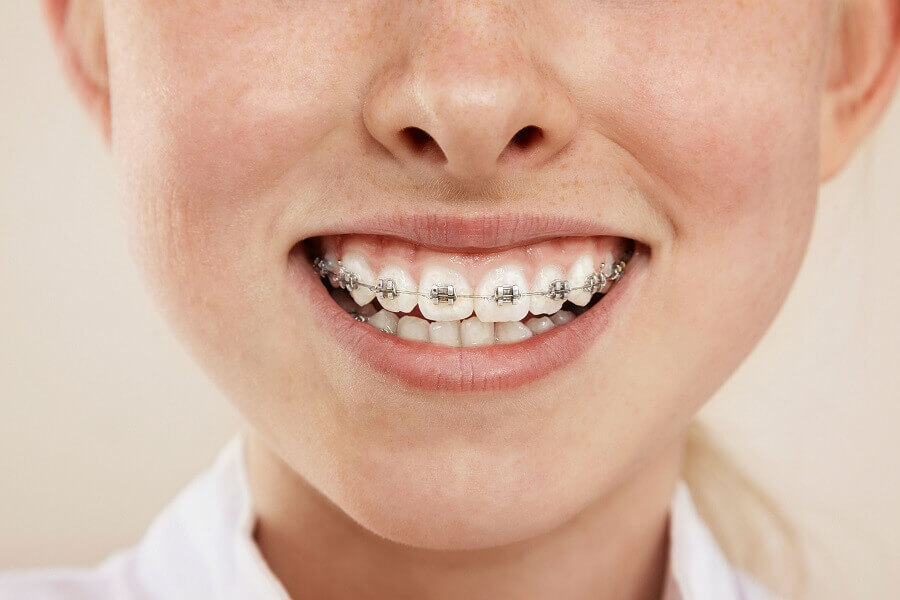How common is caries with fixed braces?
The risk of developing caries with a fixed brace is very high. Studies show that more than 60% of patients with a fixed brace can develop caries.
The first visible sign of caries are referred to as "white spot lesions"as the teeth take on a different matt, whitish colour. Caries is seen so frequently with fixed braces as it is very difficult to remove the plaque around the brackets and wires with a toothbrush. Plaque is made up of bacteria, food residue and saliva components and, if not removed, can produce acids over an extended period. The acids cause the tooth to dissolve.
Our teeth are made up of approx. 97% hydroxyapatite. A calcium phosphate mineral. The acids produced from the bacteria initially dissolve the calcium from the tooth structure. As a rule, components of the saliva (essentially calcium ions) can remineralise these initial lesions. Yet since with braces it is difficult to remove the plaque, the ions in the saliva alone are not enough.

What can I do to prevent caries?
Fluorides are often recommended to prevent caries. For the most part, in addition to toothpastes with fluoride and mouthwashes containing fluoride, the weekly use of fluoride gels and application of fluoride varnishes by the dentist are recommended and used.
However, studies show that an increased number of fluoride sources does not equate to better caries prevention than a sole fluoride source. The large number of caries cases with fixed braces confirms that new approaches are needed to prevent caries. Modern caries protection can be found in the active ingredient BioHAP; this stands for "biomimetic hydroxyapatite", the substance from which our teeth are made.
Can BioHAP help to prevent caries with fixed braces?
The latest studies show that BioHAP is a very promising active ingredient to prevent caries. A clinical study from Germany (double-blind study conducted at five German university hospitals) published in 2019 shows that toothpaste with BioHAP is just as effective as toothpaste with fluoride. The study was conducted on patients with a fixed brace. Toothpaste with BioHAP can thus prevent caries with fixed braces.
What is particularly exciting here is that remineralisation with BioHAP functions in a completely different way compared to with fluoride. While with initial caries (white spot lesion) fluoride causes only the surface to be remineralised, leaving the white spots visible, BioHAP is able to remineralise the initial caries from depth. This remineralisation with BioHAP means that white spots do not form. In addition, fluorides require calcium and phosphate from saliva and the composition thereof can differ greatly from individual to individual in some cases. BioHAP is itself a calcium (and phosphate) source and provides the minerals for remineralisation.
What else is BioHAP good for?
As a source of calcium, BioHAP is particularly well suited to preventing caries. Patients without caries have more calcium in plaque than patients with caries. Since hydroxyapatite can also function as a "bacteria magnet", the plaque on the teeth is reduced in addition to remineralisation.
Moreover, the health of the gums is also improved. Many patients with a brace often experience mild inflammation of the gums. In contrast to antibacterial dental care products, dental care with BioHAP maintains the ecological equilibrium of the bacteria that naturally occur in the mouth.
How do I prevent caries with a fixed brace?
Preventing caries with a fixed brace is a major challenge and requires considerable discipline. More frequent trips to the dentist are required than normal. In many cases professional tooth cleaning is essential. Toothpastes and mouthwashes with BioHAP are ideal for daily dental care routines at home in addition to the professional treatment. Hydroxyapatite is a biomimetic active ingredient that can prevent caries even with fixed braces.





